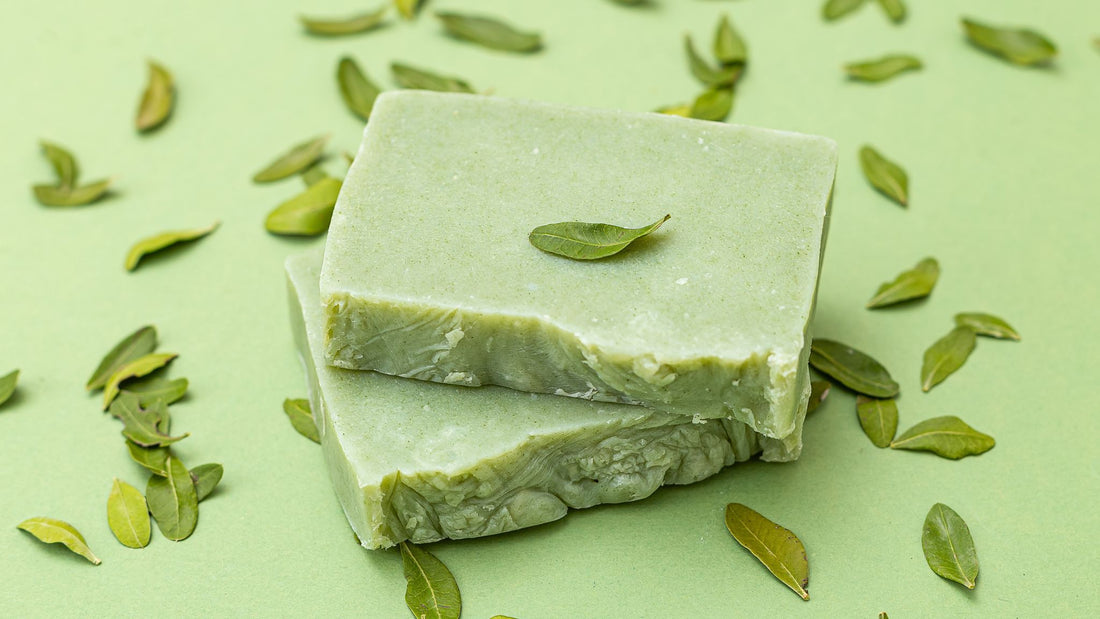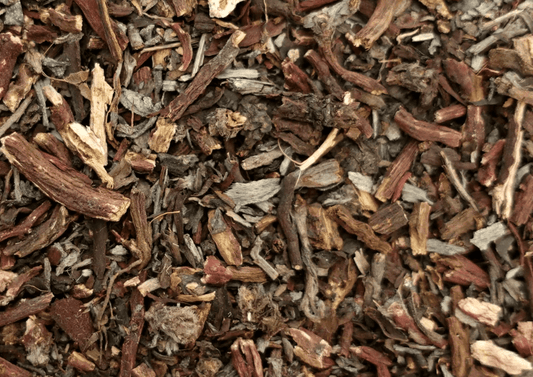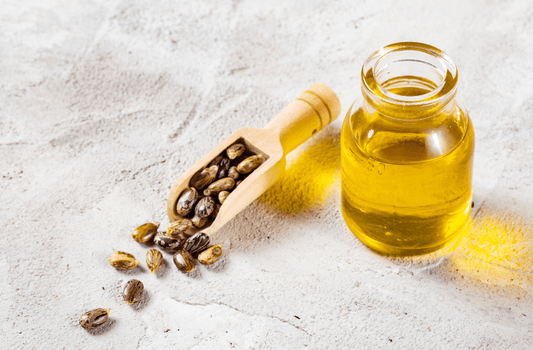Making your own organic soap at home may seem intimidating, but it's not as hard as you may think.
This recipe makes a fresh, herbal scented soap that is wonderfully conditioning.
All the oils in this recipe are certified organic by the Soil Association, so you can buy with confidence that they are genuinely 100% organic.
We've used a swirl technique called an in the pot swirl. It's an optional step to create unique looking organic soap bars.
You'll find the swirl instructions in steps 5-7 and 9. If you're new to soap making, you can skip these bits, just blend the soap until trace and pour it straight into your moulds.
You can also try our silicone soap moulds for a range of creative shapes!
Let's have a go at our organic soap recipe...
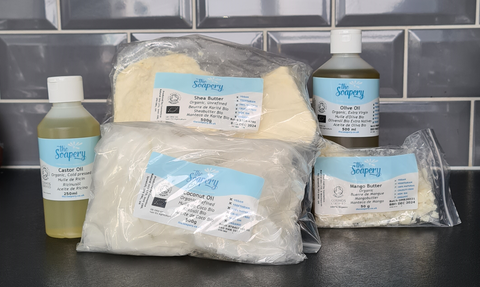
Ingredients:
- Olive oil organic 320g | 348ml
- Coconut oil organic refined 256g
- Shea butter organic 160g
- Mango butter organic 32g
- Castor oil organic 32g
- Water 264g
- Sodium hydroxide 113g
- Organic eucalyptus essential oil 12g | 13ml
- Organic rosemary essential oil 6g | 7ml
- Organic tea tree essential oil 6g | 7ml
- Emerald green mica powder 3g (optional)
Equipment:
- Gloves
- Goggles
- Scales
- Digital thermometer
- Plastic jugs, ideally 1x 2L and 2x 1L
- Soap mould, or DIY alternative
- Silicone spatula
- Stick blender
Method:

1. Mix the sodium hydroxide solution
- Put your gloves and goggles on
- Work next to an open window, the fumes are unpleasant
- Weigh your water
- In a separate jug, weigh your sodium hydroxide
- Add the sodium hydroxide to the water, not the other way around
- Mix well until dissolved
- The mixture will be hot, leave it to cool

2. Measure and heat the oils
- Weigh your oils and combine in a heatproof bowl
- Heat above a pan of boiling water, or in a microwave using short bursts.
- Heat until melted, and mix to combine
- Weigh your essential oils in a separate jug

3. Test the temperatures
- Test the temperature of your oil mixture, you're looking for 35 to 40C
- Reheat them if necessary
- Test the temperature of your sodium hydroxide mixture, you need it to be 25 to 40C

4. Blend until trace
- Add the sodium hydroxide mixture to your oils
- Stir with the hand blender then blend using short bursts
- The mixture will slowly start to thicken
- Test for trace by dripping soap batter on the surface of the mixture
- Your soap has reached trace when the drips sit on the surface of the mixture before disappearing.
- The picture above is a light trace.
- Stop mixing when it reaches trace, don't mix until it gets thick like cake mixture.
- Add your essential oils and blend until combined
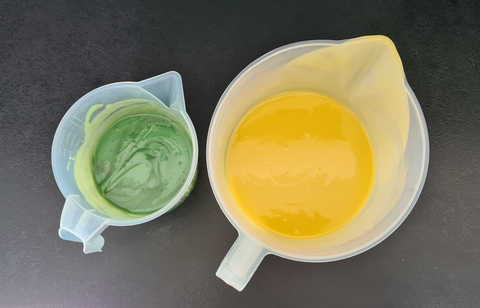
5. Prepare to swirl (optional)
- Pour a third of your soap batter into a separate jug
- Mix with the mica powder until combined
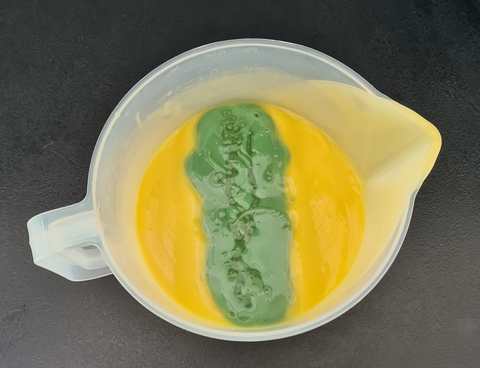
6. Combine your soap batter (optional)
- Pour your coloured soap batter in a straight line across your uncoloured soap batter.
- Pouring from a good height will help the pattern develop

7. Create your swirl (optional)
- Insert your spatula into your soap batter, reaching the bottom
- Steadily, drag it in one full circle, all the way around the jug.
- Don't mix more than one full circle, the colours will start to combine.
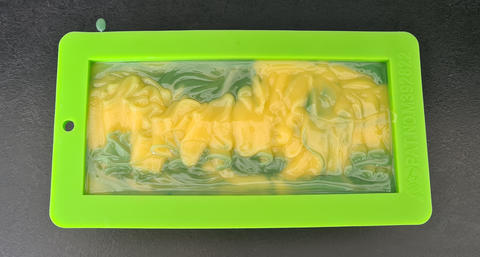
8. Pour into moulds
- Pour your soap mixture into moulds
- Gently tap the mould on your work surface to get rid of any trapped air bubbles
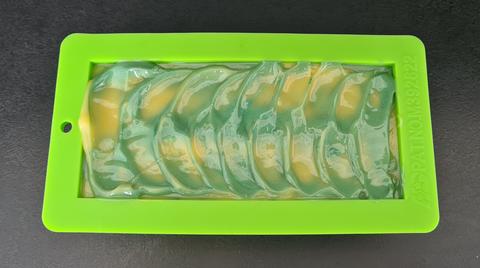
9. Top decoration (optional)
- If you have any coloured soap left over, you can create some top decoration.
- Pouring a strip down the middle of your soap and using a spoon to drag it towards the edges
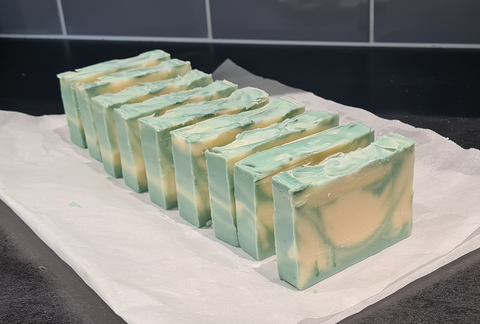
10. Leave to cure
- Wrap in greaseproof paper and towels to insulate for at least 48 hours
- Unmould and cut into bars
- Leave to cure for 4-6 weeks
Continue reading
Now that you've learned how to make organic soap, why not continue your soap making journey?
- Try our honey and oat soap recipe
- Interested in hot process soap making? Try our easy hot process soap recipe
- Try our aloe vera juice soap recipe
